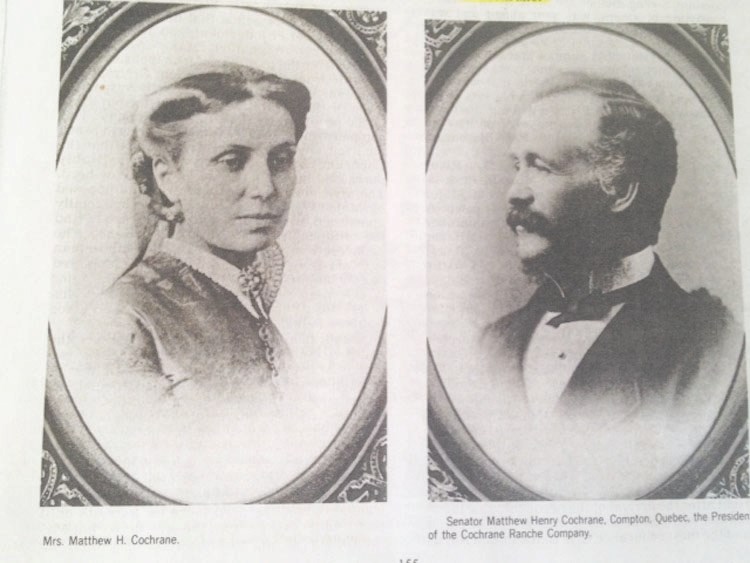The Cochrane Ranche Historic site had a shaky and cruel beginning with bringing cattle to our inclement climate, yet the perseverance and determination of our forefathers holds admiration in the hearts of all of us.
A focal point in Cochrane’s history, the Cochrane Ranche is the first large-scale ranch in Alberta to be leased from the government.
The Dominion of Canada passed the first land act in 1872 to encourage the settlement of Canada’s western lands, (referred to as the ‘peopling’ of the Northwest Territories). The act was amended in 1876 to include the granting of leased land to ease the financial burden for the smaller ranchers so they would have more land to graze their cattle at a reasonable rate. Any individual or company could lease a parcel of land no larger than 100,000 acres for a cost of one cent per acre per year from the government.
The Dominion of Canada incorporated the Cochrane Ranche Company May 14, 1881. The company’s president was Senator Matthew H. Cochrane, a capitalist from Montreal. His son, W.F. Cochrane, was the manager and five other businessmen who were involved, all living in Montreal. Major James Walker, a former Northwest Mounted Police inspector was the local manager, and Dr. D.M. McEachren was appointed as resident general manager because of his qualifications as an authority on livestock, although there is no evidence that he had any practical experience in raising cattle on the range.
For some unknown reason, the Cochrane Ranche Company received a lease of 109,000 acres, 9,000 acres more than the legal limit. Its headquarters were located one mile west of the present town of Cochrane. In order to make it even more financially feasible to bring large herds from the United States, the government removed the duty on the cattle.
Major Walker was sent to Montana in the spring of 1881 to purchase 6,800 head of cattle at an average price of $18 per head. The Montana ranchers delivered them to the 49th parallel (Canada/USA border), then I.G. Baker company, under the direction of the foreman, Frank Strong; charged $2.50 per head to drive the cattle from there to Cochrane. Thirty cowboys and 300 horses assisted Strong with the cattle drive.
The herds were forded across the Bow River at the Metwata Park location in Calgary, and then turned over to Major Walker and his men. It was late fall when the cattle finally arrived at the ranch. Even though the first winter was a mild one, many died, as they did not have a chance to recover from the hard, long cattle drive and the lack of feed during the winter. Valuable information was gathered as to which type of cattle had the most endurance. The Black Polled Angus was the sturdiest, Herefords were second and Shorthorns were the least hardy.
The Cochrane Ranche purchased more herds in 1882, which were supposed to arrive in July, but several delays occurred again and the cattle did not arrive until October. The total count of cattle at that time was 12,000 head.
As quoted from Big Hill Country: “The winter of 1882/83 was extremely severe, proving to be a disaster for the Cochrane Ranche. Major Walker could not operate the ranch as it should have been, hampered by ill-advised orders from the east, or from his immediate superior, Dr. McEachren.
“The orders were not based on sound ranching experience or in accord with existing conditions on the ranch at the time. Major Walker was forced to follow a course of action that he found entirely against his better judgment and, as a result, he tendered his resignation to take effect when a successor could be found.
“W. D. Kerfoot, a Virginian and an experienced rancher, arrived to take charge of the livestock and replace Major Walker.”
A quote from a University of Calgary paper (published 1951) by Donald Edward Brown titled “History of the Cochrane Area” stated: “Dead bodies, which were not found until June 1883 when the snow melted, were heaped in every coulee, thousands having perished. Some of the long ravines were so filled with carcasses that a man could go from the top to the bottom throughout its entire length and never have to step off a dead body. Out of the 12,000 head that had been purchased and placed on the Cochrane range, there remained now but a scant 4,000.”
After these difficult first two years the remaining cattle were moved to Belly River to a milder climate. The next project was to try to raise horses and sheep at the original Cochrane Ranche, now re-incorporated as the British American Ranch Company, which also proved to be non-profitable. Subsequently most of the land was sold in 1888.
Today, the Cochrane Ranche stands at 137 acres, proudly reminding us of the hardships of the past.




